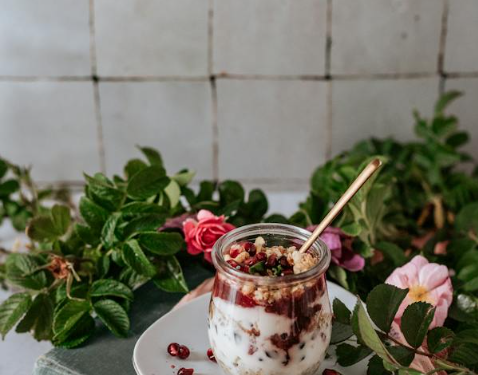Baking is a delightful blend of art and science. While it’s easy to get lost in the creative aspects of baking – experimenting with flavors, textures, and decorations – understanding the science behind baking is essential for consistently achieving delicious results. In this article, we’ll delve into the fascinating world of baking science, exploring the role of ingredients and ratios in creating perfect baked goods.
Introduction
Baking is more than just mixing ingredients and putting them in the oven – it’s a precise science that relies on the interactions of various ingredients and the careful balance of ratios. Understanding the science behind baking is the key to unlocking the secrets of perfect cakes, cookies, bread, and more. In this article, we’ll explore the fundamental principles of baking science, from the role of basic ingredients to the importance of ratios and temperature control.
Basic Ingredients in Baking
At its core, baking requires just a few basic ingredients – flour, sugar, fat, leavening agents, and liquids. Each of these ingredients plays a crucial role in the baking process, contributing to the texture, flavor, and structure of the final product. Understanding the role of each ingredient is essential for achieving the desired results in your baking endeavors.
Understanding Ratios
Ratios are the building blocks of baking, dictating the proportions of ingredients needed to create a particular type of baked good. Whether you’re making cakes, cookies, or bread, understanding the proper ratios is essential for achieving success in the kitchen. By mastering the basic ratios for common baked goods, you can confidently experiment with variations and create your own unique recipes.
Flour: The Foundation of Baking
Flour is the backbone of most baked goods, providing structure and stability to the final product. Different types of flour – such as all-purpose, bread, cake, and pastry flour – have varying protein contents, which affects the gluten formation and texture of the baked goods. Understanding how gluten forms and behaves is essential for achieving the desired texture in your baked goods.
The Sweet Factor: Sugar in Baking
Sugar not only adds sweetness to baked goods but also plays a crucial role in texture, moisture retention, and browning. Different types of sugar – such as granulated, brown, and powdered sugar – have unique properties that affect the final outcome of baked goods. Understanding how sugar interacts with other ingredients is essential for achieving the perfect balance of sweetness and texture.
Fats: Adding Flavor and Texture
Fats like butter, oil, and shortening add richness, flavor, and tenderness to baked goods. In addition to providing flavor, fats also help create a tender crumb and contribute to the overall texture of baked goods. Understanding the role of fats in baking is essential for achieving the desired mouthfeel and flavor in your creations.
Leavening Agents: Making Baked Goods Rise
Leavening agents like baking powder, baking soda, and yeast are responsible for making baked goods rise and expand during baking. Understanding how leavening agents work – and when to use them – is essential for achieving the desired level of rise and texture in your baked goods. Properly leavened baked goods will have a light and airy texture, while under or over-leavened goods can be dense or gummy.
Liquids: Binding Ingredients Together
Liquids like water, milk, and eggs play a crucial role in binding ingredients together and hydrating the flour in baked goods. In addition to providing moisture, liquids also contribute to the overall flavor and texture of baked goods. Understanding how liquids interact with other ingredients is essential for achieving the desired consistency and structure in your baked goods.
Balancing Flavors and Textures
Achieving the perfect balance of flavors and textures is essential for creating delicious baked goods. Whether you’re aiming for sweet, salty, sour, or bitter flavors, it’s essential to consider how each ingredient contributes to the overall flavor profile of the final product. Likewise, balancing textures – such as crunchy, chewy, and tender – is essential for creating a satisfying eating experience.
The Role of Temperature and Timing
Temperature and timing play crucial roles in the baking process, affecting everything from gluten formation to browning and flavor development. Understanding how temperature and timing impact the baking process is essential for achieving consistent results in your baking endeavors. Whether you’re preheating your oven, proofing dough, or monitoring the internal temperature of your baked goods, precision is key to success.
The Science Behind Oven Temperature
Oven temperature is a critical factor in baking, as it directly impacts the rate of chemical reactions and heat transfer in the baking process. Understanding oven temperature fluctuations and how to calibrate your oven for accurate results is essential for achieving consistent baking results. Whether you’re baking at high heat for a quick rise or low heat for slow and steady cooking, maintaining the proper oven temperature is essential for success.
Troubleshooting Common Baking Problems
Even the most experienced bakers encounter problems from time to time. Whether it’s a flat cake, dense bread, or burnt cookies, understanding how to troubleshoot common baking problems is essential for achieving success in the kitchen. By identifying the root cause of the issue and making the necessary adjustments to your recipe or technique, you can salvage your baked goods and avoid disappointment.
Experimenting with Variations
One of the joys of baking is the opportunity to experiment with different ingredients, flavors, and techniques. Whether you’re substituting ingredients, adjusting ratios, or trying out new flavor combinations, there’s always room for creativity in the kitchen. By embracing experimentation and getting creative with your baking, you can discover new and exciting recipes that are uniquely your own.
Conclusion
Understanding the science behind baking is essential for achieving consistently delicious results in the kitchen. By mastering the role of ingredients, ratios, temperature, and timing, you can confidently tackle any baking project and create mouthwatering treats that rival those of your favorite bakery. So roll up your sleeves, preheat your oven, and let the science of baking inspire your next culinary masterpiece.

FAQs
- Why is it essential to understand the science behind baking?
- Understanding the science behind baking helps bakers make informed decisions about ingredients, ratios, and techniques, leading to better results in the kitchen.
- How can I adjust a recipe if my baked goods turn out too dry or dense?
- If your baked goods turn out too dry or dense, try adjusting the ratio of wet to dry ingredients, increasing the amount of fat or liquid in the recipe, or reducing the baking time or temperature.
- What’s the best way to troubleshoot baking problems like uneven rising or browning?
- To troubleshoot baking problems like uneven rising or browning, consider factors such as oven temperature fluctuations, ingredient freshness, and mixing techniques. Adjusting these variables can help you achieve more consistent results.
- Is it possible to substitute ingredients in baking recipes?
- Yes, it’s often possible to substitute ingredients in baking recipes, but it’s essential to understand how each ingredient contributes to the final outcome and make adjustments accordingly. Experimentation is key to finding the perfect substitutions for your favorite recipes.
- How can I prevent my baked goods from burning on the bottom?
- To prevent your baked goods from burning on the bottom, try placing a baking sheet or oven rack on the lower oven rack to shield the bottoms from direct heat. You can also reduce the oven temperature slightly or use a lighter-colored baking pan to help distribute heat more evenly.




